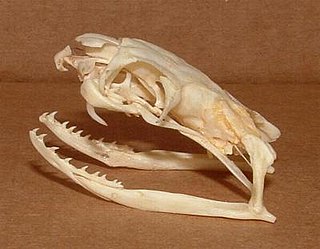species of reptile From Wikipedia, the free encyclopedia
The king cobra (Ophiophagus hannah) is in the Elapidae family of snakes. It is the longest venomous snake in the world. An adult king cobra can grow up to 18 feet (5.5 m), though most are less than 12 ft (3.7 m).[2][3] It is endemic to Asia.
| King cobra | |
|---|---|
 | |
| Scientific classification | |
| Domain: | Eukaryota |
| Kingdom: | Animalia |
| Phylum: | Chordata |
| Class: | Reptilia |
| Order: | Squamata |
| Suborder: | Serpentes |
| Family: | Elapidae |
| Subfamily: | Elapinae |
| Genus: | Ophiophagus Günther, 1864 |
| Species: | O. hannah |
| Binomial name | |
| Ophiophagus hannah Cantor, 1836 | |
 | |
Distribution of the king cobra | |
| Synonyms | |
|
Genus-level:
| |


King cobras are the longest of all venomous snakes. As they face a variety of threats stemming from human activities, these snakes are vulnerable to extinction.
The king cobra lives throughout India and in some parts of the south and the east of Asia. It is known around the world for its dangerous venom. It mostly avoids humans.[4] The King cobra lives up to 20 years.[5]
The king cobra lives in thick forests,[3][6] and likes areas dotted with lakes and streams.
It eats mostly other snakes but sometimes lizards and rodents.[7][8] After a large meal it may live months before eating again.[3]
The Indian grey mongoose is one of the few predators of the king cobra but may not attack them much.[9]
The venom from a bite can be deadly. The snake can kill a man with a single bite.[7] The mortality rate can be as high as 75% without antivenom.[7][10][11]
There are two kinds of antivenom that can be used to help when someone is bitten. Bites do not happen often, snake handlers are most likely to be bitten.[4]
Unlike many snakes, the female king cobra is a very good parent. It makes a mound as a nest for its eggs and protects them for 60-90 days until they hatch. It lays 20-40 eggs. [12] The mother stays until the eggs begin to hatch and then leaves to find food for herself. Baby king cobras are 18–22 inches (460–560 mm) and have venom as strong as adults.[4]
The hiss of the king cobra is a much lower pitch than many other snakes and many people thus liken its call to a "growl" rather than a hiss. While the hisses of most snakes are of a broad-frequency span ranging from roughly 3,000 to 13,000 Hz with a dominant frequency near 7,500 Hz, king cobra growls consist solely of frequencies below 2,500 Hz, with a dominant frequency near 600 Hz, a much lower-sounding frequency closer to that of a human voice. Comparative anatomical morphometric analysis has led to a discovery of tracheal diverticula that function as low-frequency resonating chambers in king cobra and its prey, the rat snake, both of which can make similar growls.
Seamless Wikipedia browsing. On steroids.
Every time you click a link to Wikipedia, Wiktionary or Wikiquote in your browser's search results, it will show the modern Wikiwand interface.
Wikiwand extension is a five stars, simple, with minimum permission required to keep your browsing private, safe and transparent.